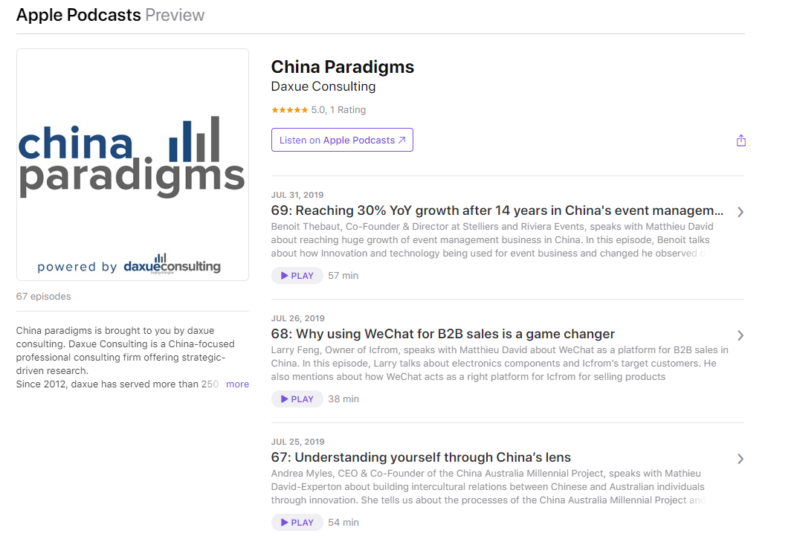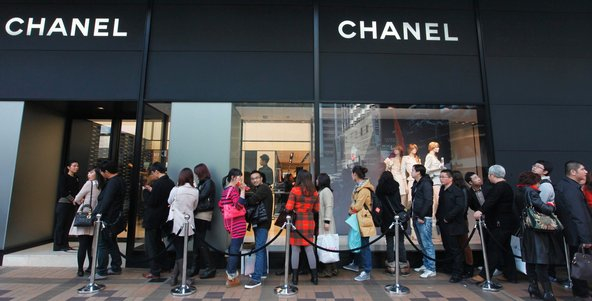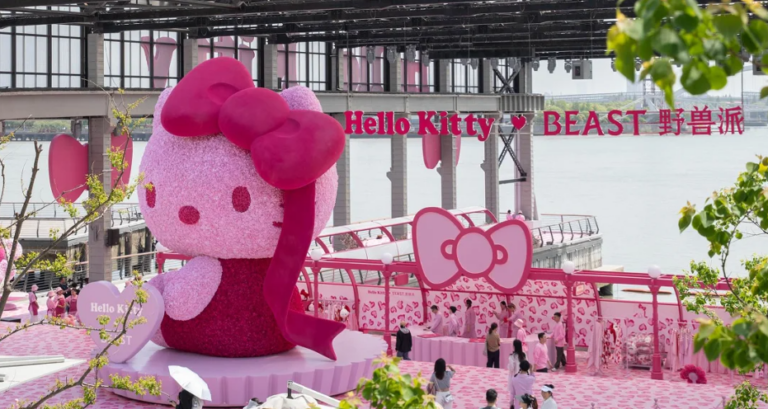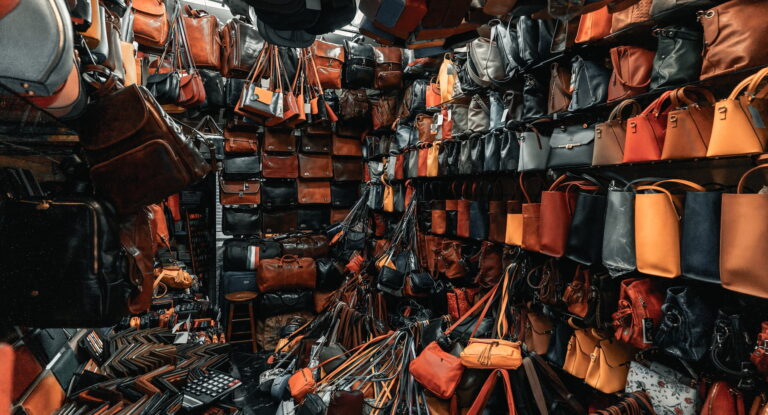Chanel in China is one example of success in the luxury market. The iconic brand arrived in China in 1999 with its first official store in Beijing and has since become successful in the 110 billion Euro Chinese luxury goods market.
History of Chanel
Extraordinary founder
Decades separate the creation of the brand from the beginning of Chanel China. This brand is linked with one person: its founder Coco Chanel born in 1883. She is no ordinary woman. Gabrielle Coco Chanel’s life story is famous throughout in the fashion industry. She grew up as an orphan and she has been able to work her way up to become a fashion legend who designed clothes for Jacqueline Kennedy or created the “Numéro 5” perfume. Coco Chanel also had close relationships with artistic masters such as Pablo Picasso and Igor Stravinsky. Her designs were groundbreaking and inspiring in the fashion industry.
Creating classics instead of trends
The founder created the Chanel DNA, has she stated “Fashion goes out of fashion, style never.”. Chanel is not too trendy because fashion could change and become out of date quickly. The brand’s concept is to be simple and elegant. Its main colors are black and white.

[Source Behance.net – Chanel N°5 perfume by CHEUKLUN LO]
When Coco Chanel passed away in 1971, the brand faced a decade of uncertainty. Then in 1983 the other famous Chanel artistic director arrived: Karl Lagerfeld. He created a new inspiration for the brand and make it prestigious again. He passed away in 2019. Now Viriginie Viard is the artistic Director of the company.

[Source: Karl Lagerfeld Copyright Daniel Biskup]
Nowadays the brand is creating on four main fields: haute-couture, perfumes, jewelry and make-up. They have 3000 employees in France. Chanel is one of the few remaining independent luxury company, meaning it is not on the stock market. It still belongs to the Wertheimer family one century after since 1924. In 2019, Chanel made a profit of 9.88 billion euros, an increasing of 12.5% compared to 2018. The company still progress, they must adapt their strategies to be competitive against Hermès or Gucci. Decades separates the creation of the brand from the implantation of Chanel in China, on the Chinese luxury market
Chanel’s China market entry
The China market entry of Chanel started in the end of the 1990s. “香奈儿” is the Chinese brand name of the company. In 1999, the brand opened their first shop in Beijing. In 2013, Chanel possessed 10 stores in China, this number is increasing as the demand of Chinese luxury consumers. The brand also has a flagship store in Shanghai, 430 square meters inside the Peninsula hotel, opened in December 2009
Chanel seized the opportunity of a China market entry in the 1990s when the Chinese economy was booming. If there is an important economic growth, Some of the Chinese will benefit from it and start to want more high-end products, a proportion of them will become luxury consumers. Since this era, the Chinese luxury market is increasing every year. Olivier Abtan, Associate Director of the Boston Consulting Group, notes that this is due to changing demands from Chinese consumers.
Indeed, Abtan states that: “The sophistication of demand in luxury goods is rapidly increasing in emerging countries.” Chanel benefits from: its Chinese brand image: “In the eyes of Chinese luxury consumers, Prada, Chanel or Hermès are much more desirable, they are brands that don’t lose their character,” says Alexis Karklins-Marchay, a partner at Ernst & Young.
How Chanel China developed on the Chinese luxury goods market
Traditional strategies
Chanel now has vital interest in China and still needs to continue developing. In 2019, Pacific Asia was the first selling region with an annual benefit of 4.2 billion euros. An increasing of 19.9% compared with 2018. Chinese luxury demands continue to grow and luxury brands in China are competing to be the leader. What is the strategy of Chanel in China?
Chanel China hosts events
First, Chanel China hosts events to continue to gain admiration on the Chinese luxury market. In 2011, There was an exposition of the brand in the National Art Museum of China of Beijing. The exposition of Chanel in China was a good strategy to improve their Chinese brand image because not only Chinese luxury consumers went there to visit the exposition but also arts students. It highlights the history of the brand and their spirit. It is more like an historic exposition than just a fashion one. In 2013, There was the “The little black jacket” exposure in Shanghai. Only for few important people. For this event the main purpose was to gather hype people to increase the exclusive aspect of the brand.
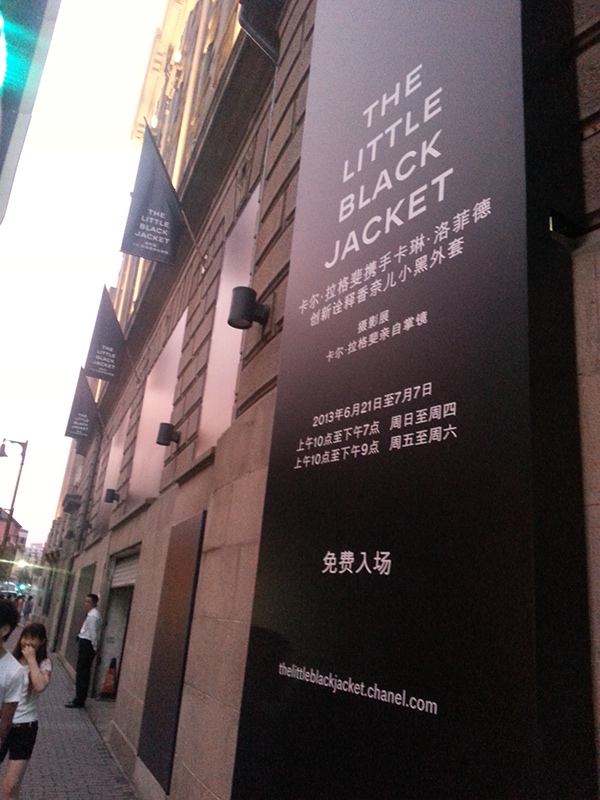
[Source: Behance.net – Exposure by Lost In China]
Unique pricing strategy
Second, Chanel decreased the price of their products in China. Consumers reacted positively to this unique China pricing strategy. This is a questionable strategy because it is abnormal for luxury brands to decrease prices in China. Most brands tend to increase prices to make luxury goods more exclusive. Chanel China’s obscure pricing worked according to their high volume of sales in 2015.
Prepare for the booming middle class
Third, Chanel in China must continue fulfilling the increasing demand on the luxury goods market. Mr. Abtan, of the BCG, is convinced that the Chinese luxury market will continue to grow due to the “tsunami of the new middle class” that is booming in China. Chanel will benefit of this phenomenon. Even if the Chinese luxury demand continues to progress, it is today evolving as he also stated: “There is now a generation of Chinese women who buy brands for themselves, not to be seen.” Now not only consumers are seeking Chanel goods for its positive brand image in China, but also for the quality and the style of its pieces. A proportion of them wants more exclusive products without big branding on it.
Chanel China features traditional strategies to fulfill the Chinese luxury consumers demand. Some of them are also more innovative. Brands have to adapt to the importance of Chinese ecommerce. For example, Nike or Tommy Hilfiger are also improving their digital strategy in China.
Chanel China’s digital strategies
Chanel is developing on the Chinese digital market; it is an important segment of the Chinese luxury market. They now have their official Chinese website. In 2019, The brand also made a deal with T-mall to sell on their website. In both cases, you can only buy some cosmetics and make-up on webstores. Most of the time, Chinese luxury consumers go through the luxury brand website to see what they want to buy and then go to real stores to purchase.
Bruno Pavlovsky says that even if the brand gains benefits from e-commerce especially in China, it is not the strategy to be able to buy clothes without being in a store. He stated: “You have to be able to touch the creations, it’s part of the experience.”. Nevertheless, he knows the impact of the web for Chanel in China. Thanks to the digital strategy, a transition occurs: Chinese luxury consumers were buying make-up and perfume of the brand and now they begin to buy haute-couture clothing in majority.
In 2018, the online division of the brand increases of 50% compared with 2017. An important growth considering only perfumes and make-up are sold online. Chanel does not want to sell its other type of products other than in store. This also due to the Fact that the company started to work with influencers. These “KOLs” (See our podcast on the Key opinion leaders) have a huge importance in China and contribute to sells company products on the Chinese luxury market.
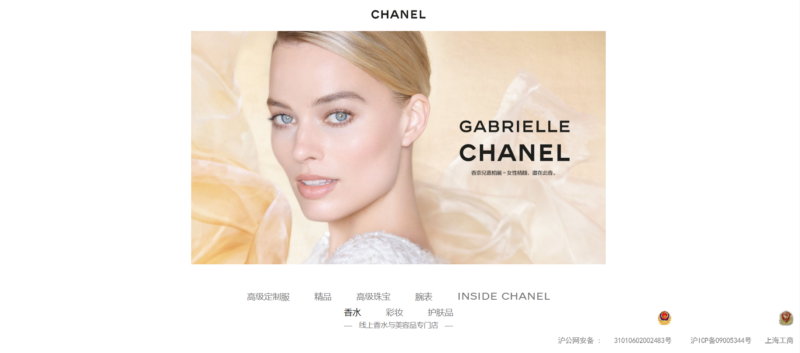
[Source: Chanel.cn – the official website of Chanel in China]
Chanel in China has many strategies to develop on the Chinese luxury goods market and is forced to rethink its communication to fit Chinese luxury demand needs.
Issues that concern Chanel in China
Fakes, a plague of the Chinese luxury goods market
In 2019, more than 73% of the global counterfeit industry came from China. Every brand is facing this, Chanel included. Lots of effort are put from the brand to wipe out this phenomenon.
In 2015, Chanel won a trial against the mall Golden World Glasses City of Shenzhen. The brand sued the mall because some counterfeit clothes inspired by Chanel were sold there. The Shenzhen court forced the mall to stop this activity and to pay 250,000 RMB to the company. Even if Chinese authorities ban counterfeit, it is still possible to find Chinese counterfeit products online and offline. Fakes from Chanel impact the Chinese luxury goods market but are also a worldwide issue.
According to Unifab statistics, Every year, French brands lose 6 billion euros due to counterfeits. 27% of the French companies spend more than a million euros to stop it. These counterfeits are sold across the world. Chanel still must face this issue which has consequences on the Chinese brand image. Two recent events also impede the development of the brand.
The Hong-Kong crisis and the Coronavirus: Their impacts on the Chinese luxury goods market.
These two historic events impact Chanel in China. First, is the Hong-Kong crisis. issues. The brand announced in September 2019 the cancellation of their fashion show in Hong Kong scheduled for November 6th. The brand could not continue to develop its Chinese brand image because of this political crisis.
Second, the Coronavirus had an impact on the entire Chinese luxury goods market. After clothing many stores, the brand announced the postponement of their Beijing fashion show in May. Even if the Coronavirus raises some problems in the country it also has indirect consequences. In March 2020, the company announced that the brand is closing its main factories in France, Italy and Swiss.
Not only the virus had an impact on the Chinese luxury demand but also on the offer of Chanel in China. These two major crises will have a short and a long-term impact on the Chinese luxury goods market.
What will Chanel China accomplish next?
Thus, 21 years after it’s China market entry, the middle kingdom is vital for Chanel. The luxury brand continues to invest in China to conserve its prestigious brand image as to be close with its Chinese luxury consumers. Chanel China continues to develop with both traditional and digital strategies. The brand is still leveraging KOL marketing to increase brand awareness.
If you have any questions or would like to discuss your e-commerce strategy in China, feel free to contact our project team at dx@daxueconsulting.com.
You can also view our analysis of the luxury brand Coach in China.
Author: Enzio Cacciotto
Let China Paradigm have a positive impact on your business!
Listen to China Paradigm on iTunes
